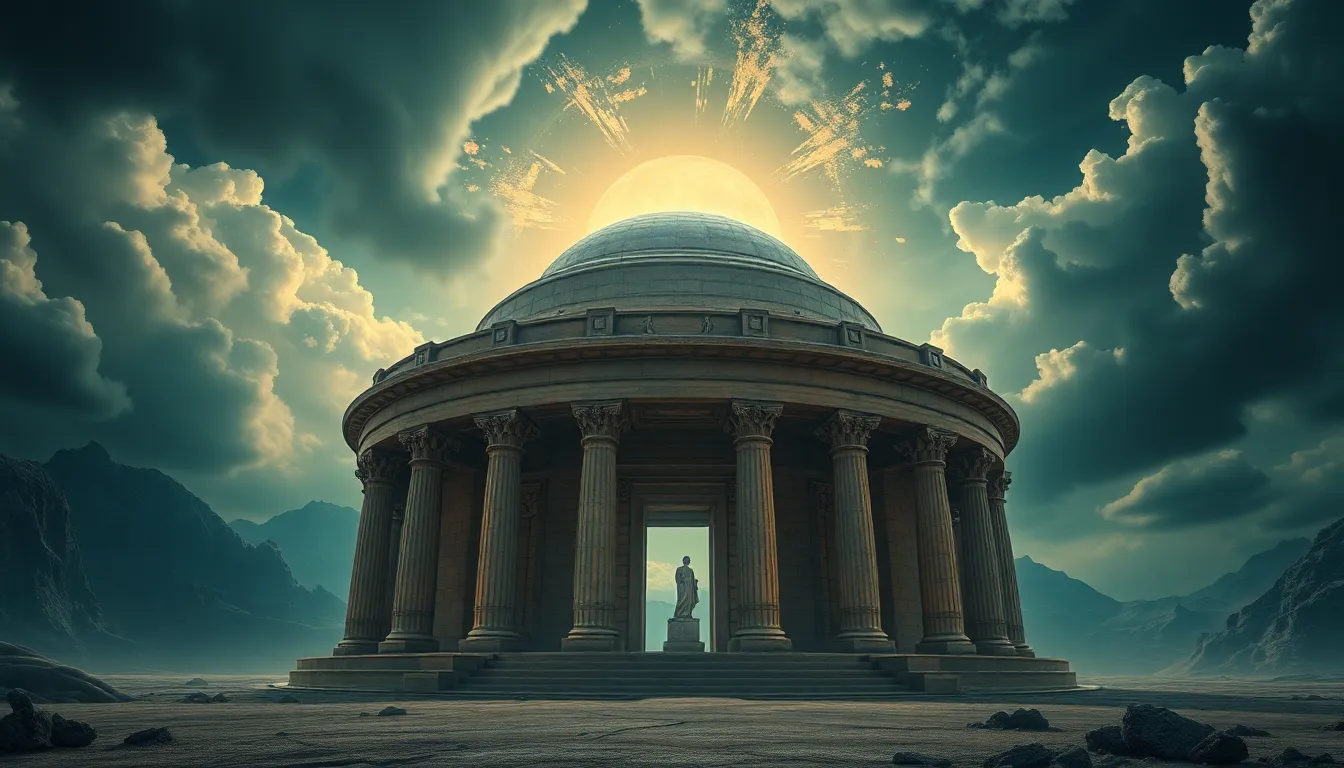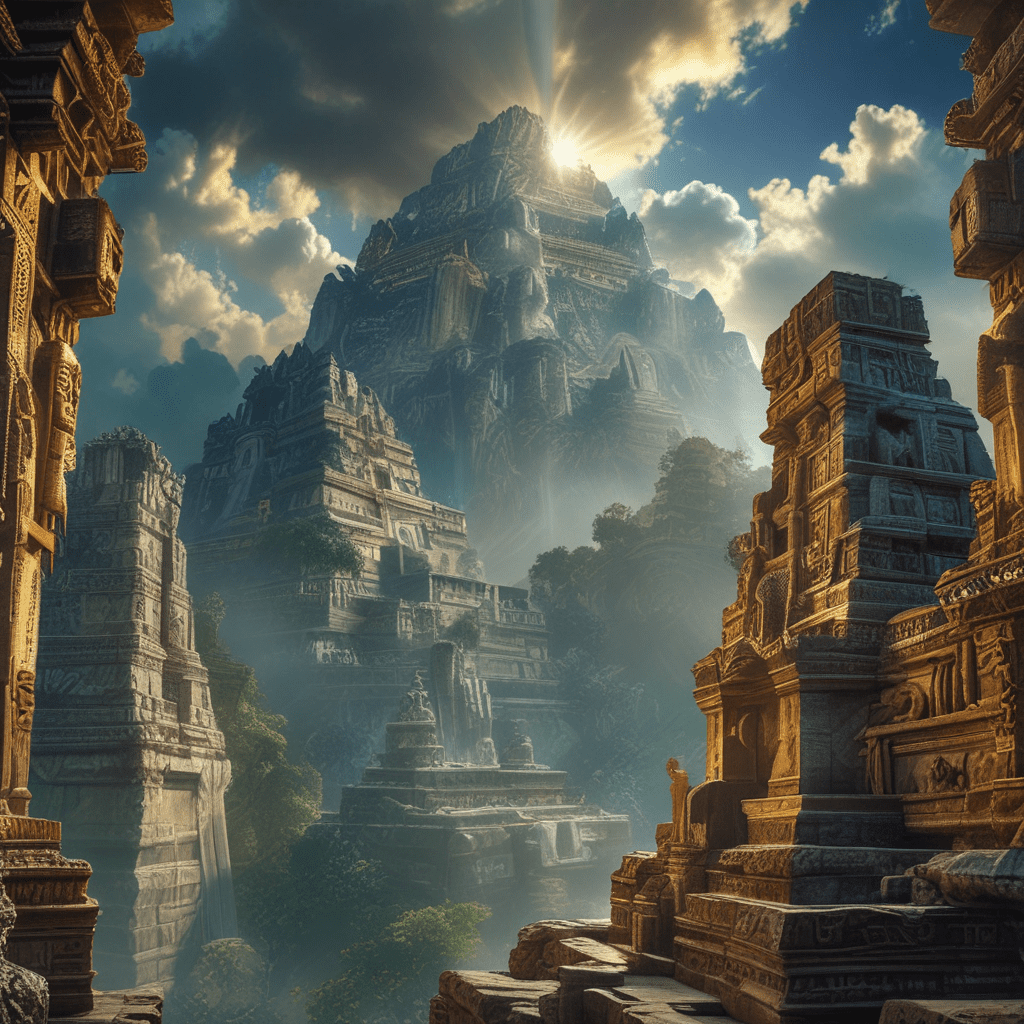The Mythical Architects: How Gods Shaped Our World
Introduction to Mythical Architecture
Mythical architects, the gods and deities of ancient civilizations, have long been central figures in the creation stories that shape our understanding of the world. These divine beings are often credited with not only the creation of humanity but also the very landscapes and structures that define our physical and cultural environments. The significance of these gods transcends mere folklore; they represent the values, fears, and aspirations of the societies that worshiped them.
This article aims to explore the multifaceted roles that mythical architects play in various cultures, examining how their narratives reveal the deeper connections between humanity and the cosmos. By delving into creation myths, architectural wonders, and the interplay between the divine and the natural world, we can gain a richer understanding of the legacy left by these architects of our reality.
The Pantheon of Architects: A Global Perspective
Across the globe, cultures have revered a pantheon of gods known for their creative powers. Each civilization has its own set of divine architects, each with unique attributes and responsibilities. Here, we will explore a few notable examples:
- Greek Mythology: In Greek traditions, gods like Zeus and Athena are seen as creators and protectors of cities, exemplified by the grand Parthenon in Athens.
- Egyptian Mythology: The god Khnum is depicted as a potter who shapes humanity on his wheel, while Ra, the sun god, is associated with the creation of the universe.
- Hindu Mythology: Brahma, the creator god, is responsible for the manifestation of the universe, while Vishnu preserves it, and Shiva brings transformation.
- Norse Mythology: The gods Odin, Vili, and Ve are credited with creating the world from the body of the slain giant Ymir, shaping the earth, sky, and seas.
This comparative analysis illustrates the universal theme of divine creation, showcasing how different cultures attribute architectural and cosmic origins to their gods.
Cosmogonies: Myths of Creation and the Universe
Creation myths serve as foundational narratives that explain the origins of the world and the existence of humanity. These stories often depict gods engaging in acts of creation, destruction, and transformation.
For instance:
- The Genesis Creation: In Judeo-Christian tradition, God creates the world in six days, culminating in the creation of humans as the pinnacle of creation.
- The Enuma Elish: This Babylonian creation myth describes how the god Marduk defeated the chaos monster Tiamat and used her body to create the heavens and the earth.
- The Popol Vuh: In Mayan mythology, the gods attempted several times to create humans, finally succeeding with maize dough, representing the importance of agriculture.
These cosmogonies not only explain how the universe came to be but also highlight the role of gods in shaping the cosmos, reflecting the values and beliefs of their respective cultures.
Divine Influence on Natural Landscapes
Many myths link gods to geographical features, attributing the creation of mountains, rivers, and other landmarks to divine actions. Such narratives often serve to enhance the cultural significance of these features.
For example:
- Mount Olympus: In Greek mythology, this mountain is considered the home of the gods, symbolizing their power and authority over the mortal realm.
- The Nile River: In Egyptian culture, the Nile is revered as a gift from the gods, particularly Osiris, who is associated with fertility and agriculture.
- The Himalayas: In Hindu belief, these mountains are sacred, believed to be the abode of gods like Shiva, further accentuating their spiritual significance.
These case studies illustrate how deities are entwined with the natural world, influencing both the physical landscape and the spiritual lives of the people.
Architectural Marvels: Temples and Sacred Spaces
The influence of gods is most evident in the construction of significant architectural structures. Temples, ziggurats, and sacred sites are often built to honor deities and facilitate worship.
Examples of such architecture include:
- The Parthenon: This iconic temple in Athens was dedicated to Athena, the goddess of wisdom and warfare, showcasing classical Greek architectural style.
- The Pyramids of Giza: These monumental structures were built as tombs for pharaohs, reflecting their divine status and connection to the afterlife.
- The Ziggurat of Ur: This massive structure served as a temple for the moon god Nanna, illustrating the significance of celestial deities in Mesopotamian culture.
Architectural styles across cultures have been influenced by the narratives surrounding these divine beings, resulting in structures that embody both artistic and spiritual significance.
Mythical Creatures as Extensions of Divine Design
In many mythologies, creatures such as dragons, sphinxes, and other fantastic beings often serve as extensions of divine design, embodying the characteristics of their creators.
For instance:
- Dragons in Chinese Mythology: These creatures symbolize power, strength, and good fortune, often associated with water and rainfall, reflecting the benevolence of the gods.
- The Sphinx: In Egyptian mythology, the Sphinx combines human and lion features, representing wisdom and strength, serving as a guardian of sacred spaces.
- Garuda in Hinduism: This bird-like creature is the mount of Vishnu, symbolizing speed and martial prowess, embodying the protective traits of the deity.
These mythical creatures not only reflect the characteristics of their gods but also play crucial roles in the narratives and architectural landscapes of their respective cultures.
Human Interaction with the Divine: Rituals and Offerings
Architecture has played a vital role in facilitating interactions between gods and humans. Temples and sacred spaces are not merely structures; they are venues where rituals and offerings take place, reinforcing the bond between the divine and the mortal.
Rituals often include:
- Daily prayers and offerings to appease the gods.
- Festivals celebrating significant myths and deities.
- Rites of passage, such as marriages and funerals, performed in sacred spaces.
The importance of these rituals lies in their ability to maintain divine favor and harmony in creation, underscoring the interdependence between humans and their gods.
The Evolution of Mythical Architecture Over Time
As societies evolve, so too does their perception of gods and the architectural forms inspired by them. Historical shifts in belief systems have led to changes in the architectural styles and functions of sacred spaces.
Modern interpretations of ancient myths can be seen in:
- Contemporary architecture that incorporates mythological themes and symbols.
- Restorations of ancient sites that preserve their historical and cultural significance.
- Art and literature that draw from ancient narratives to explore modern themes.
This evolution demonstrates the enduring influence of mythical architects on the built environment and cultural identity.
The Enduring Legacy of Mythical Architects
The impact of ancient myths on modern culture and architecture is profound. The narratives surrounding mythical architects continue to shape our understanding of creation, space, and the human experience.
Today, we see:
- Architectural designs that reflect spiritual beliefs and cultural heritage.
- Incorporation of mythological motifs in contemporary art and literature.
- Increased interest in preserving ancient sites as part of our collective memory.
These legacies remind us of the powerful connection between humanity and the divine, illustrating how stories of the past resonate in our current world.
Conclusion: The Lasting Impact of Divine Narratives on Our World
In summary, the exploration of mythical architects reveals key insights into how ancient civilizations understood their world through the lens of divinity. From creation myths to architectural marvels, the influence of gods on human creativity is undeniable.
As we reflect on the importance of mythology in shaping our built environment, it becomes clear that these narratives are not merely relics of


